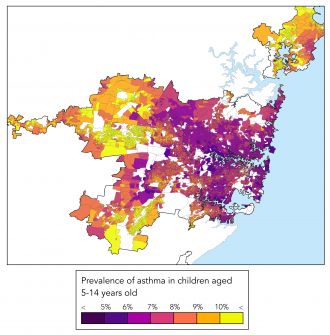The surprising link between living in suburbs and asthma among children
More children outside of Australia’s biggest cities were found to have asthma
Your support helps us to tell the story
From reproductive rights to climate change to Big Tech, The Independent is on the ground when the story is developing. Whether it's investigating the financials of Elon Musk's pro-Trump PAC or producing our latest documentary, 'The A Word', which shines a light on the American women fighting for reproductive rights, we know how important it is to parse out the facts from the messaging.
At such a critical moment in US history, we need reporters on the ground. Your donation allows us to keep sending journalists to speak to both sides of the story.
The Independent is trusted by Americans across the entire political spectrum. And unlike many other quality news outlets, we choose not to lock Americans out of our reporting and analysis with paywalls. We believe quality journalism should be available to everyone, paid for by those who can afford it.
Your support makes all the difference.Children living in the suburbs of Australia's major cities are twice as likely to have asthma compared to those living in the city, according to a new study that revealed a surprising health disparity.
For years, living in cities with high vehicular and industrial pollution has been believed to be connected to higher cases of asthma.
But a new study released on Wednesday, based on information from the 2021 Australian Census, shows other factors, like socio-economic status, might play a bigger role.
Researchers from Telethon Kids Institute and Curtin University used advanced statistical modelling and satellite imagery to map the distribution of childhood asthma cases across four major Australian cities: Sydney, Melbourne, Brisbane, and Perth.
The study found that as they moved away from the busy parts of the inner city, asthma cases increased instead of decreasing.
"In many ways, it was surprising just how similar all the cities were," lead author of the study and associate professor Ewan Cameron from Telethon Kids Institute said.
"We found that in every city, there was that same trend – increasing prevalence from the wealthier inner-city suburbs to the poorer outer-city suburbs."
Researchers identified that most of the residents living within the cities were more affluent, while those living in outer areas had more socio-economical disadvantages, which they say was a significant factor explaining at least half of the variation in asthma prevalence.
"We know from earlier studies that the risk of developing asthma is strongly shaped by socioeconomic factors, including chronic family stress, poor housing quality, dietary factors, and obesity,” Dr Cameron explained.
“These factors include higher rates of chronic family stress and poor housing quality, including dampness and poorly ventilated gas stoves, as well as dietary and obesity factors.
“People in lower socio-economic areas, many of whom are renting, often lack the means to alleviate these issues and may have poorer access to health care support for asthma management.”

Asthma, a life-long disease which causes airways to swell and narrow, impacts 8.7 per cent of children aged 1–14 years in Australia, ranking among the world’s highest. Globally 6.5 per cent of children are known to have asthma.
Australia generally has better air quality than many parts of the world. However, increasing bushfires and extreme weather have been making the air quality worse in recent years. Last year in December, amid raging bushfires, Sydney’s air quality dropped to lowest levels in the Air Quality Index, with the city briefly more polluted than Delhi.
Environmental factors such as outdoor air pollution and climate variations also played a role, researchers found. While regions experiencing larger daily temperature fluctuations were found to have a higher risk of asthma.
“We do find there’s a contribution from the environment – places that experience large daily temperature variations tend to have higher risk of asthma. More extreme weather can be a factor in triggering asthma,” he said.
Researchers say their findings can help the government provide targeted support where it is most needed.
“The pandemic in particular exposed a lot of these health inequities between wealthier and poorer parts of the country,” Dr Cameron said.
“Our study reveals we still have a lot to do to give children an equal start in life.”
“By revealing where asthma risk is highest at a fine level of precision – down to neighbourhood block size – we can identify the local government areas that need the most support,” he said.
“This means we can target interventions and policies to help those most at need and have the greatest impact.”

Join our commenting forum
Join thought-provoking conversations, follow other Independent readers and see their replies
Comments